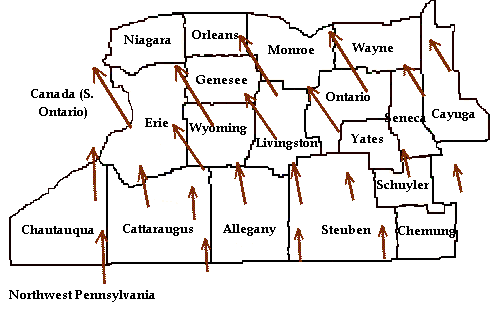Using the Idea of the
Vector
Is there a way that we can incorporate both aspects of wind, speed and direction, with
a simple system?
Yes! Make the length of the arrow correspond to the speed of the wind. With
this system, long arrows correspond to high winds, and so on. Now, the viewer can
tell which direction the wind is blowing in his area with a quick glance.
Furthermore, the viewer can tell how the wind speed in his area compares other
areas.

Once the arrow indicates both a magnitude of some sort (in this case, the speed of the
wind) and a direction, it is called a vector. The vector in this example is a
velocity vector. The length of the arrow, which represents the magnitude of the
velocity, is called the speed. Notice that speed and velocity are not synonyms in
physics -- the term velocity refers to a vector quantity and has both a magnitude
(the speed) and direction.
Notice that if the viewer wants to know exactly how strong the wind is in a particluar
location he will still have to refer to numerical data -- the length of the vector arrow
is not sufficiently precise to provide this information. So at this point, we would
guess that vectors have very limited quantitative use.
But we would be wrong. |